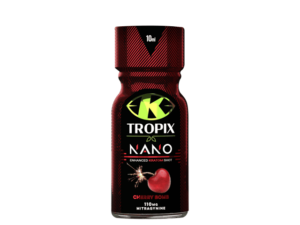For many, supplementation is a fact of life.
The 21st-century body has many nutritional demands just to keep up with the stresses of modern life, and unfortunately, today’s food supply simply doesn’t deliver those nutrients.
Adding vitamins, minerals, and micronutrients into your daily regimen can help you thrive in this hectic world.
The problem is that the supplement industry is a 100 Billion dollar industry, and most products are total junk.
While some great supplement companies are doing the necessary R&D and taking the extra steps to produce high-quality products, many others are cutting costs by cutting corners.
These cut corners translate into sub-par products filled with extra ingredients that are highly toxic and potentially dangerous to those with particular sensitivities.
In the following article, we highlight some of the most toxic ingredients to watch out for on supplement labels and shed some light on how to find the best products out there today!
- FOR A DETAILED GUIDE DOWNLOAD MY FREE SUPPLEMENT BUYING GUIDE!
Biohack Your Brainpower
Companies Making Good Supplements

Mind Lab Pro

NooCube
Inactive Ingredients

Every dietary supplement we consume contains two primary substances; the active pharmaceutical ingredient (API) and the inactive ingredient, also known as the excipient; together, these two make up a supplement’s unique pharmaceutical formulation.
The purpose of an API is in the name itself; the active ingredients are compounds that bring about the desired pharmaceutical effect – the star of the show.
But what exactly are inactive ingredients, or fancifully known as excipients?
Simply put, excipients are any component of a supplement other than the API.
Their presence is not intended to bring any nutritional benefit or therapeutic effects.
So, why do supplement manufacturers incorporate inactive ingredients into supplements?
Because in many ways, excipients modify the API. Consider excipients as the supporting cast to the star that makes the star’s presence possible.
The inactive ingredients alter the active ingredient’s physical properties, such as improving an API’s stability, color, taste, appearance, and absorption.
But are these inactive ingredients safe?

Every dietary and nutritional supplement undergoes evaluation by the food and drug administration (FDA), so naturally, every food additive is regulated.
Yet, despite extensive biological profiling, some health effects of excipients may go undetected in preclinical toxicology screening.
Moreover, the gradual buildup of these inactive ingredients in the body can be harmful to health.
One significant health concern is the development of allergies and intolerances to supplements due to exposure to these inactive ingredients.
Therefore, consuming vitamins and dietary supplements for their nutritional value may ironically end up detrimental to one’s health.1Daniel Reker et al, ‘Inactive’ ingredients in oral medicationsSci Transl Med. 2019
Inactive Ingredient Types
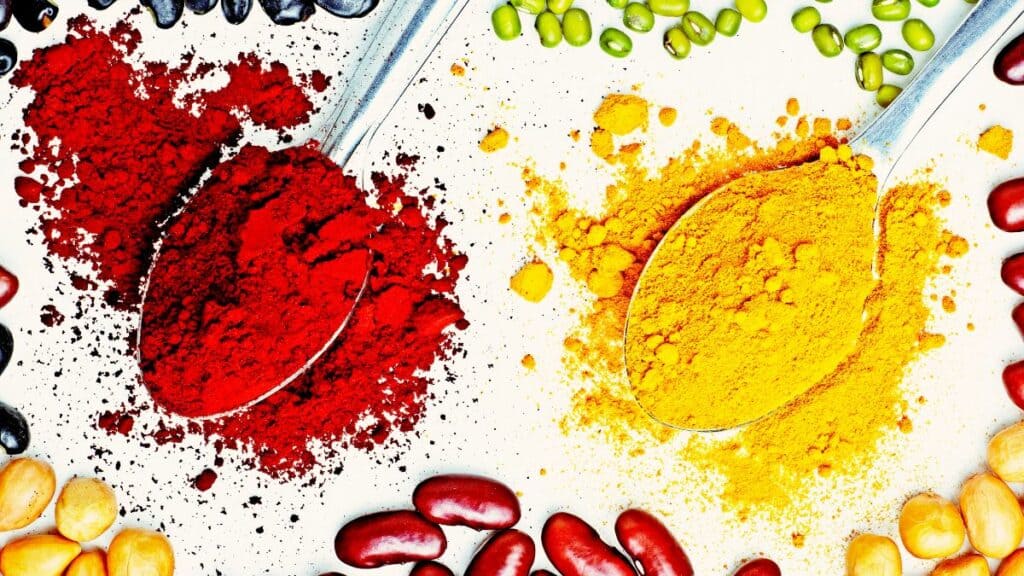
- Coloring agents/food dyes:
- Examples: brilliant blue, Allura red, indigo carmine, titanium dioxide
- Foods:
- Examples: soybean oil, vanilla, castor oil, corn syrup, milk, peanut oil, sesame oil, PEG castor oil
- Fillers:
- stabilize and increase the size of the supplement, making it easier for consumption.
- Examples: lactose, sucrose, calcium carbonate, and magnesium stearate.
- stabilize and increase the size of the supplement, making it easier for consumption.
- Preservatives:
- protect supplements from microbial growth,
- Examples: phenols, parabens, citric acid, propyl gallate
- protect supplements from microbial growth,
- Flow agents:
- also known as glidants and used as anti-caking agents, this inactive ingredient improves the flow of powders during supplement tablet manufacturing
- Examples: silica derivatives, fumed/pyrogenic silica, magnesium carbonate, and talc.
- also known as glidants and used as anti-caking agents, this inactive ingredient improves the flow of powders during supplement tablet manufacturing
- Binders:
- binders hold all the supplement ingredients together and give the tablet form and strength,
- Examples: cellulose derivatives, starches, sugar alcohols (xylitol, sorbitol, mannitol), gelatin, and polyethylene glycol (PEG).
- binders hold all the supplement ingredients together and give the tablet form and strength,
Common Toxins Found In Dietary Supplements
The doses of these ingredients found in supplements may not be immediately harmful, but chronic usage over time increases exposure and the likelihood of toxicity.
Polyethylene Glycol (PEG)

Derived from petroleum, PEG is a binder that is found in many supplements, medications, household products, cosmetics (creams, baby wipes), and food.
In addition to serving as an inactive ingredient, PEG is commonly used as a children’s laxative and to prep the gut before surgery or colonoscopy.
Despite being labeled as a biologically inert substance, there are an increasing number of reported cases of allergic reactions to medications and supplements containing PEG.
These allergic reactions vary from mild to life-threatening anaphylaxis.
PEG is referred to as the ‘hidden allergen’ as a growing body of evidence shows that anti-PEG antibodies are present in more than half of the population.
Because of its ubiquitous and diverse uses, it has become necessary to be aware of PEG allergies.2Priya Sellaturay , Shuaib Nasser, Pamela Ewan , Polyethylene Glycol-Induced Systemic Allergic Reactions (Anaphylaxis)J Allergy Clin Immunol Pract. 20213E Wenande, L H Garvey ,Immediate-type hypersensitivity to polyethylene glycols: a reviewClin Exp Allergy. 20164Cosby A. Stone, Jr., MD, MPH et al, Immediate Hypersensitivity to Polyethylene Glycols and Polysorbates: More Common Than We Have RecognizedJ Allergy Clin Immunol Pract. 2019
Silicon Dioxide
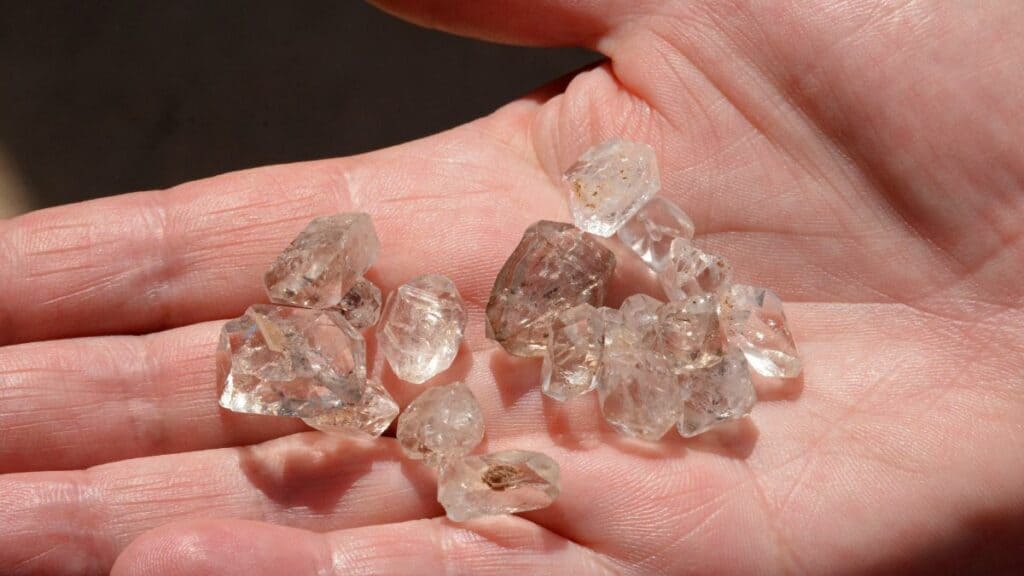
Silicon dioxide is a natural element found abundantly on earth. Also known as synthetic amorphous silica, it comprises aggregated nano-sized primary particles greater than 100nm.
Nanoparticles are microscopic particles (even smaller than the wavelength of visible light) that are only visible with a microscope.
They are present in nature and can be manufactured.
Their practical applications range from medicine and engineering to environmental remediation.
In healthcare, silica nanoparticles are often utilized as a glidant and anti-caking agent in supplements.
As a flow agent excipient, it absorbs water and reduces friction between particles to improve powder flow.
Since nanoparticles are minuscule, they can be readily absorbed by the body’s three primary surfaces: the lungs, intestines, and skin.
Inhalation of silica particles is known to cause lung problems such as inflammation, fibrosis, thrombosis, and lung cancer.
This type of pulmonary injury induced by silica particles is irreversible and commonly seen in construction and mining workers.5Chun Dai , Yunchao Huang , Yongchun Zhou , Research progress about the relationship between nanoparticles silicon dioxide and lung cancerZhongguo Fei Ai Za Zhi. 2014
Furthermore, these nanoparticles can potentially move from the lungs to other parts of the body; resulting in kidney damage and increasing the risk of cardiopulmonary diseases. 6Peter HM Hoet, Irene Brüske-Hohlfeld & Oleg V Salata, Nanoparticles – known and unknown health risksJournal of Nanobiotechnology. 2004
Research shows that silicon dioxide inhibits DNA repair. This will create genome instability and produce carcinogenic effects. 7Ai Gao , Shanshan Song, Danlin Wang, Wei Peng, Lin Tian, Effect of silicon dioxide on expression of poly (ADP-ribose) polymerase mRNA and proteinCell Biol Int. 2009
Other research demonstrates that exposure to silicon dioxide nanoparticles can induce neurobehavioral changes (impairment in learning and memory) by affecting the gut’s microbial diversity and tissue integrity.8Jun Diao et al, Silicon dioxide nanoparticles induced neurobehavioral impairments by disrupting microbiota-gut-brain axisJ Nanobiotechnology. 2021
In the US, silicon dioxide is generally recognized as safe by the FDA.
However, in 2018, the European Food Safety Authority (EFSA) re-evaluated silicon dioxide as a food additive and concluded that the European Commission considers lowering the concentration limits of silicon dioxide in food.
The panel also urges the European Commission to include more details on silicon dioxide specifications, such as particle size distribution.9Peter Aggett et al, Re-evaluation of silicon dioxide (E 551) as a food additiveEFSA Journal 2018
Sodium Ascorbate
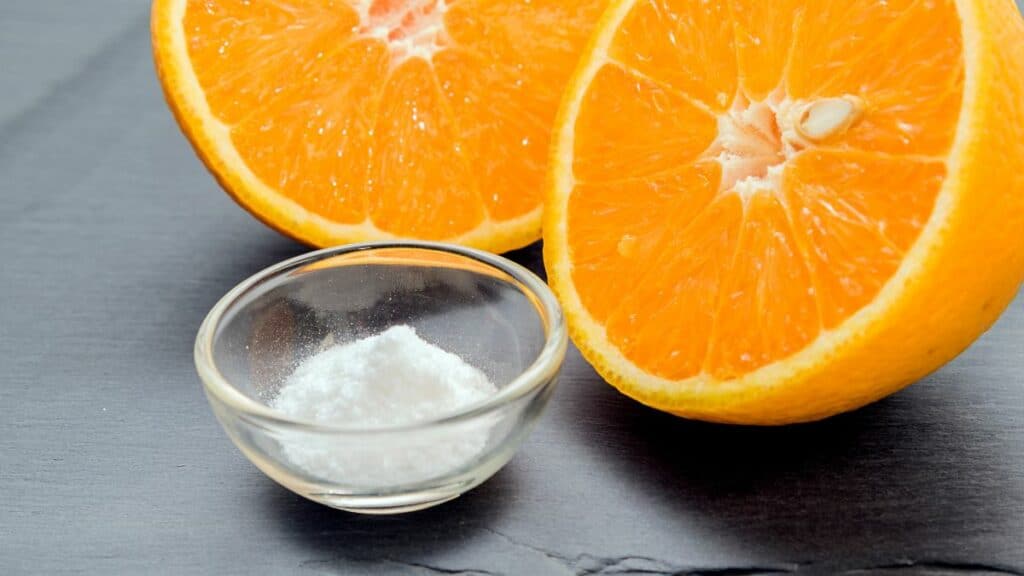
Sodium ascorbate is a salt form of ascorbic acid, a popular vitamin C supplement, that can be utilized as a preservative in vitamin and mineral supplements since they act as antioxidants.
Additionally, they stabilize color by preventing brown discoloration and regulating the acidic content of a supplement.
Other than that, they are also purposeful in food (prevents discoloration of meats), beverages, medications, cosmetics, and medical care products.
Moreover, just like polyethylene glycol, sodium ascorbate is also used to prep the gut for colonoscopy as it acts as a laxative.
Consuming ascorbic acid provides our bodies with a wealth of advantages. Several kinds of research shows that vitamin C helps the body fight cancer, boost the immune system and prevent inflammation. 10Pub Chem, Sodium ascorbatePub Chem. 2008
In the world of supplements, sodium ascorbate has many advantages and is considered a safe excipient.11Michele Varvara et al, The Use of Ascorbic Acid as a Food Additive: Technical-Legal IssuesItal J Food Saf. 2016
However, because sodium ascorbate contains salt, a concern arises that this form of C vitamin may increase the blood pressure in those with hypertension and heart disease.
Talc/Magnesium Silicate
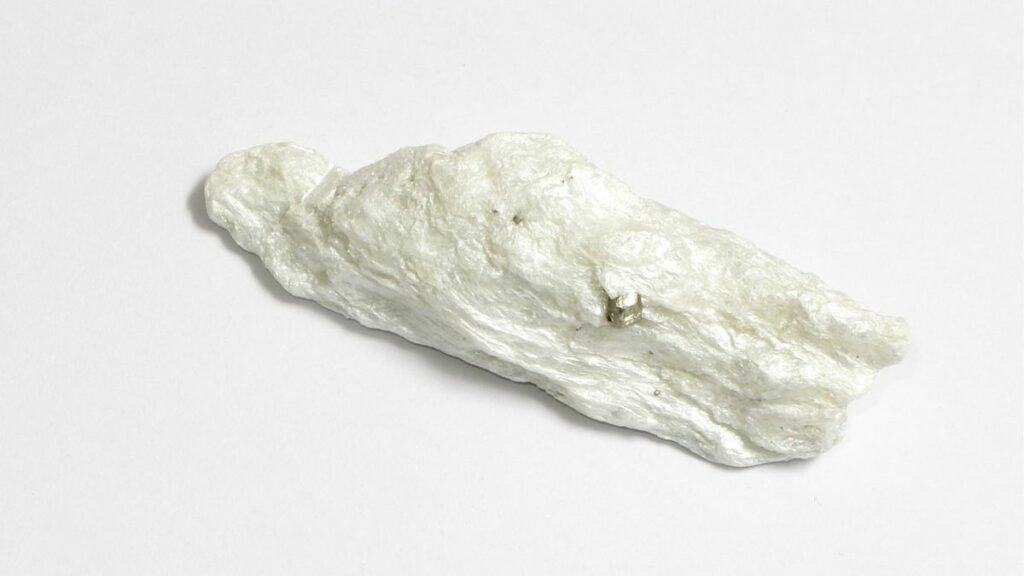
You have probably used talcum powder at some point in your life. It is a common household item, typically used to prevent diaper rash.
But did you know that talc is the hydrated form of the mineral magnesium silicate?
Magnesium silicate is another versatile mineral that is used in many industries. The pharmaceutical industry uses it as an anticaking agent or lubricant.
Its purpose is to prevent the ingredients from clumping together, thus improving the flow of powder when the tablets are compressed.
Talc is often viewed as an innocuous powder.
But it does have some hidden dangers.
In the early 1970s, fiber toxicology revealed that talcum powder contained asbestos fibers.
And although talc is not a carcinogen, asbestos is a known carcinogen.
Talc miners are at a high risk of acquiring lung cancer through inhalation of asbestos-containing talc powder.12Che-Jui Chang et al, Occupational Exposure to Talc Increases the Risk of Lung Cancer: A Meta-Analysis of Occupational Cohort StudiesCan Respir J. 201713Jungwon Kim et al, Lung cancer probably related to talc exposure: a case reportInd Health. 2013
In addition to causing lung disease, occupational talc exposure positively correlates with increasing the risk of stomach carcinoma. 14Che-Jui Chang et al, Talc exposure and risk of stomach cancer: Systematic review and meta-analysis of occupational cohort studiesJ Formos Med Assoc. 2020
Another cause of concern is the increase in the risk of ovarian cancer.
Over the years, several cases reported increased ovarian cancer cases after using asbestos-contaminated talcum powder on the genitals.15Ross Penninkilampi, Guy D Eslick, Perineal Talc Use and Ovarian Cancer: A Systematic Review and Meta-AnalysisEpidemiology. 201816Nicolas Wentzensen, Katie M O’Brien, Talc, body powder, and ovarian cancer: A summary of the epidemiologic evidenceGynecol Oncol. 202117Tasha Stoiber, Sean Fitzgerald, and Nneka S Leiba, Asbestos Contamination in Talc-Based Cosmetics: An Invisible Cancer RiskEnviron Health Insights. 2020
Sodium Selenate
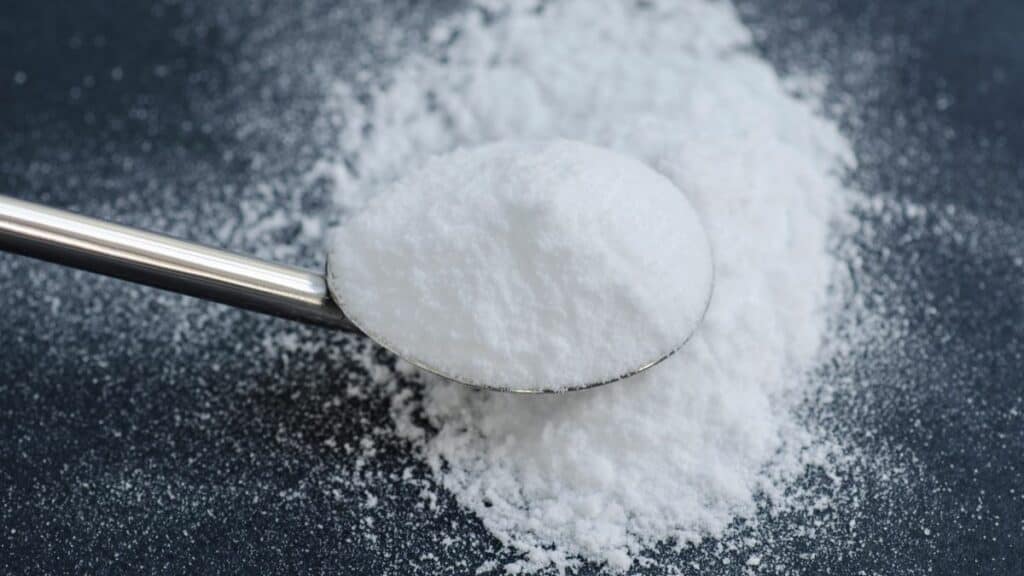
Sodium selenate is the sodium salt of the trace element selenium.
Many folks are deficient in this trace mineral as it is lacking from their diet.
Consequently, sodium selenate is routinely added to vitamins and minerals and animal feed.
As an excipient, this salt improves the solubility of supplements.
But because it is found abundantly in many supplements, one must watch out for overconsumption of selenium.
Although selenium toxicity is rare, overexposure in diet can lead to gastric issues, fatigue, irritability, and nerve damage.
Chronic exposure to sodium selenate can lead to liver, lung, and kidney damage. 18A M Fan, K W Kizer,Selenium. Nutritional, toxicologic, and clinical aspectsWest J Med. 199019 NIH, SeleniumNIH. 2021
Titanium Dioxide
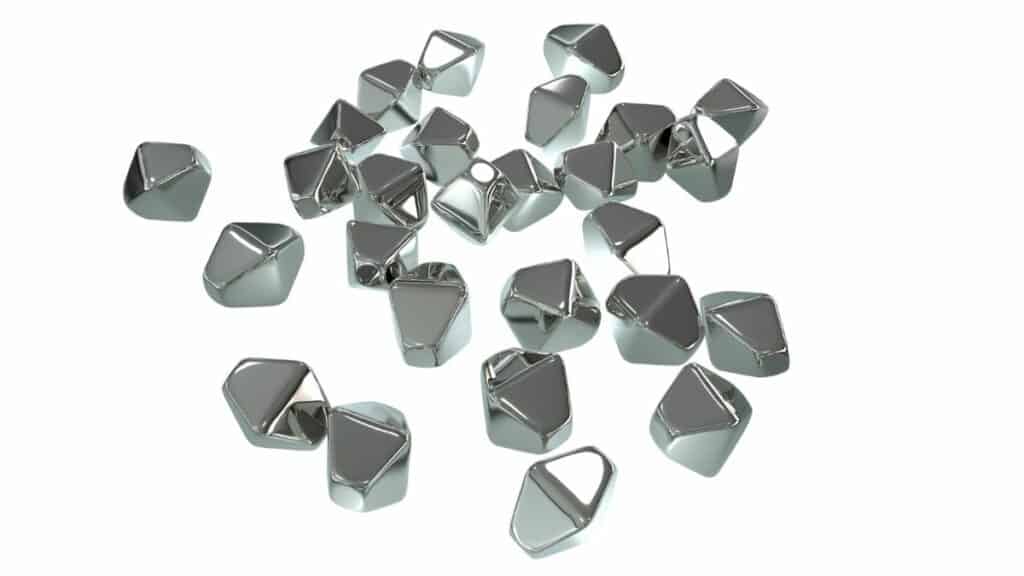
Known for its bright white color, this mineral gives tablets and pills the white coating we are familiar with.
Other than its use in supplements and medications, titanium dioxide is also used in foods and cosmetics. 20Matej Skocaj et al, Titanium dioxide in our everyday life; is it safe?Radiol Oncol. 2011
Interestingly, titanium dioxide absorbs UV rays, thus making it an ideal ingredient in sunscreens.
This property also protects supplements and their packaging from UV damage. 21Threes G Smijs and Stanislav Pavel, Titanium dioxide and zinc oxide nanoparticles in sunscreens: focus on their safety and effectivenessNanotechnol Sci Appl. 2011
However, titanium dioxide nanoparticles do present cause for concern over the safety of their uses in the various aspects of daily life.
Titanium dioxide nanoparticles can infiltrate through the body’s barriers to accumulate in various organs such as the liver, spleen, kidneys, heart, lungs, and the small intestine.22Ewa Baranowska-Wójcik et al, Effects of Titanium Dioxide Nanoparticles Exposure on Human Health-a ReviewBiol Trace Elem Res. 2020
Titanium dioxide can cause genotoxic effects, meaning that these nanoparticles can alter DNA, producing gene expression modifications and increasing the risk of cancer.23Tao Chen 1, Jian Yan , Yan LiJ, Genotoxicity of titanium dioxide nanoparticles Food Drug Anal. 2014
Nano titanium dioxide particles can cause blood clots if deposited within the lungs.24Yiying Bian et al, Titanium dioxide nanoparticles enhance thrombosis through triggering the phosphatidylserine exposure and procoagulant activation of red blood cellsPart Fibre Toxicol. 2021
Within the gut, titanium dioxide can alter the gut surface, reducing its capability to absorb nutrients and thus leading to malnutrition and weight loss.
Titanium dioxide negatively impact heart health as well, affecting the heart rate, rhythm, and blood pressure.
This is why in 2021 after years of reassessment, the EFSA stated using titanium dioxide in foods is no longer safe.25EFSA, Titanium dioxide: E171 no longer considered safe when used as a food additiveEFSA 2021
Artificial Colors and Artificial Dyes

Artificial colors and artificial dyes are the most common excipients added to supplements to enhance the color profile for visual desirability.
But don’t be fooled, these colors are quite dangerous.
One crucial reason is that the bases of these dyes and colors are derived from petroleum oil (crude oil).26Michalina Oplatowska-Stachowiak , Christopher T Elliott , Food colors: Existing and emerging food safety concernsCrit Rev Food Sci Nutr. 2017
Research demonstrates that artificial colors and dyes increase children’s risk of autism spectrum disorder and attention deficit hyperactivity disorder (ADHD).27L Eugene Arnold , Nicholas Lofthouse, Elizabeth Hurt, Artificial food colors and attention-deficit/hyperactivity symptoms: conclusions to dye forNeurotherapeutics. 201228Prabasheela Bakthavachalu, S Meenakshi Kannan, M Walid Qoronfleh, Food Color and Autism: A Meta-AnalysisAdv Neurobiol. 2020
For this reason, since 2010, the European Union requires that food and beverages containing artificial colors display a warning label stating that it may harm the activity and attention of children.29EFSA, Food coloursEFSA. 201330Carol Potera, DIET AND NUTRITION: The Artificial Food Dye BluesEnviron Health Perspect. 2010
It’s also been shown that tartrazine (yellow artificial color) binds to the DNA of white blood cells and alters the DNA’s ability to repair itself.
Consequently, this will lead to the collection of cells with damaged DNA and increase the risk of carcinoma.31Bruno Moreira Soares. et al, Effects on DNA repair in human lymphocytes exposed to the food dye tartrazine yellowAnticancer Res. 201532Panagiotis Mpountoukas et al, Cytogenetic evaluation and DNA interaction studies of the food colorants amaranth, erythrosine and tartrazineFood Chem Toxicol. 2010
Animal research has unearthed many other adverse effects of artificial dyes and colors.
Four food dyes (yellow 5 and 6, blue 1, and red 40) cause hypersensitivity reactions and three of these (yellow 5 and 6, red 40) were contaminated with carcinogens.
Red 3 is also known to cause cancer in animals.33Sarah Kobylewski , Michael F Jacobson, Toxicology of food dyesInt J Occup Environ Health. 2012
Corn Starch/Modified Corn Starch
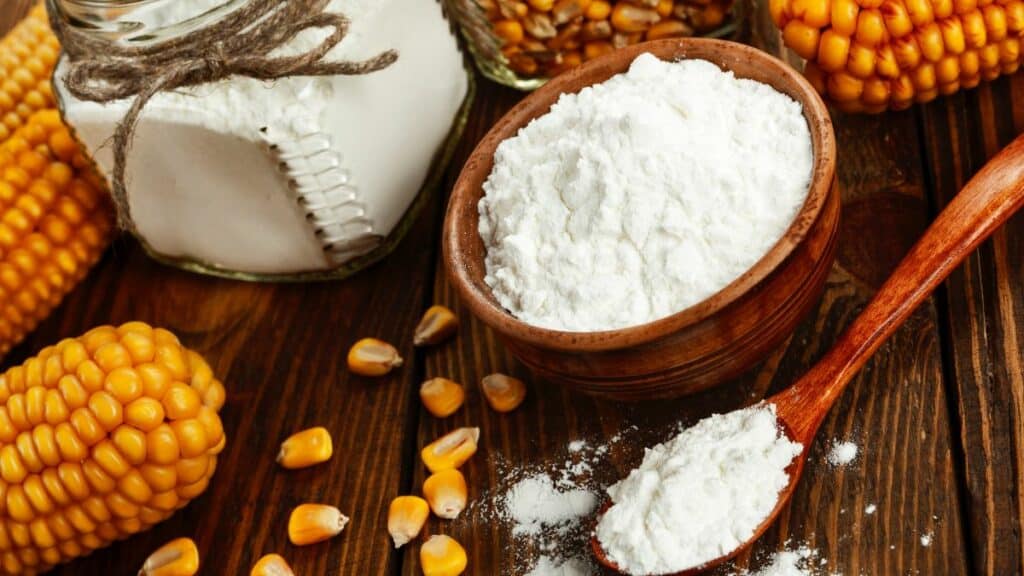
C0rn starch is a traditional excipient that is derived from corn grain.
You may be familiar with the uses of corn starch in cooking since it is commonly used to thicken soups, gravy, and sauces.
To alter the original starch’s properties and increase shelf life, corn starch is often modified (and not necessarily genetically).
Modified corn starch can be utilized as an excipient in three ways; as a disintegrating agent, diluent, and binder.
A disintegrating agent allows a supplement to dissolve so that the active ingredient is readily absorbed by the body.
But what about genetically modified corn starch?
Corn starch derived from genetically modified corn is considered a GMO corn starch.
Since the 90s, the production and consumption of GMO corn have increased to over 80%. However, the type of corn contains a protein that can potentially cause allergies.34T H Lee, Genetically modified foods and allergyHong Kong Med J. 2017
Allergy to this corn protein is rare, and many food items do not list corn products on their labels. Moreover, corn starch developed from GMO corn is used practically in everything, from food items and packaging to vitamin and minerals supplements.
For these reasons, it is difficult for anyone with a corn allergy to steer clear of food products containing corn. 35Steve L Taylor , Susan L Hefle, Genetically engineered foods: implications for food allergyCurr Opin Allergy Clin Immunol. 2002
Allergy is just one manifestation of food intolerance. Other reactions to corn intolerance include diarrhea, bloating, headache, fatigue, and palpitations. 36Caroline J Tuck et al, Food IntolerancesNutrients. 2019
Cornstarch is also atypically used in medical gloves as powdered cornstarch makes it easier to wear latex gloves. However, its use in medical gloves has been banned in the UK and Germany as it poses a health risk to patients and healthcare workers.37Richard F Edlich et al, Dangers of cornstarch powder on medical gloves: seeking a solutionAnn Plast Surg. 2009
Maltodextrin
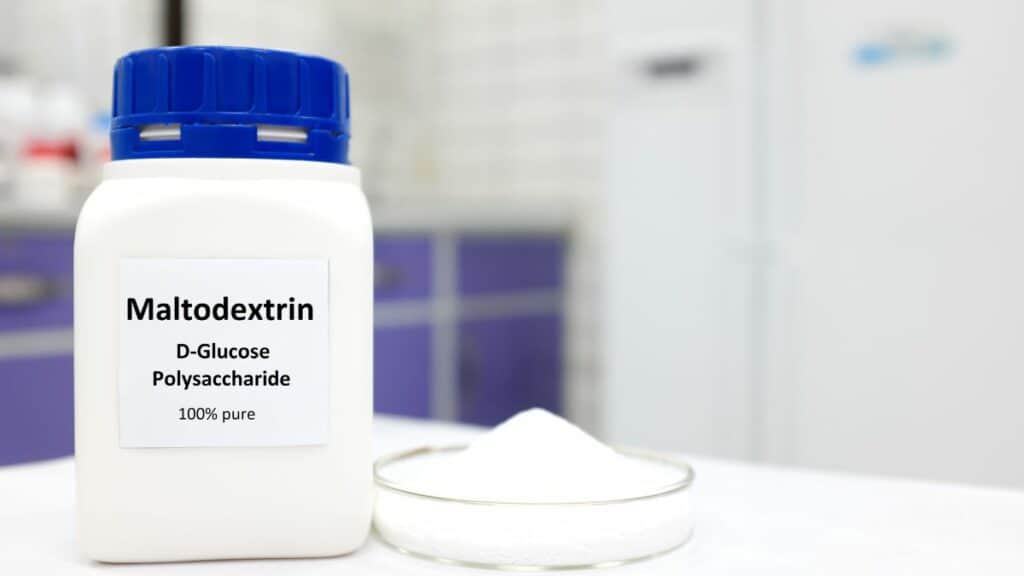
Maltodextrin is the twin to corn starch, it serves the same purpose as a food enhancer and excipient.
However, maltodextrin is a starch derived from multiple sources, such as wheat, rice, tapioca, and corn.
For this reason, maltodextrin may contain traces of gluten, and anyone with gluten sensitivity may have to avoid food or supplements containing maltodextrin.38Denise L Hofman , Vincent J van Buul , Fred J P H Brouns, Nutrition, Health, and Regulatory Aspects of Digestible MaltodextrinsCrit Rev Food Sci Nutr. 2016
Simply put, maltodextrin is a sugar, capable of raising blood sugar levels more than regular table sugar.
Excessive consumption of foods or supplements containing maltodextrin can increase one’s risk of diabetes.
Over time, it can also alter gut bacteria or lead to the development of allergies and food intolerance.
Furthermore, there are also health risks associated with consuming maltodextrin derived from GMO foods, such as developing antibiotic resistance, cancer (bladder or stomach), and reproductive issues.39Lars K Poulsen, Allergy assessment of foods or ingredients derived from biotechnology, gene-modified organisms, or novel foodsMol Nutr Food Res. 200440Barbara de Santis et al, Case studies on genetically modified organisms (GMOs): Potential risk scenarios and associated health indicatorsFood Chem Toxicol. 2018
Hydrogenated Oils (Soybean Oil, Rapeseed/Canola Oil, Corn Oil, Sesame Oil)

Almost all dietary guidelines recommend keeping the consumption of trans fat low. As it is well-known fact that excessive consumption of trans fat increases the risk of coronary heart disease.
Trans fats are often present in vitamins and minerals as hydrogenated oil.
What are these hydrogenated oils?
Hydrogenated oil is solid fat obtained from various edible oils extracted from plants.
Commonly used oils include soybean, cottonseed, canola, corn, and palm oil.
As an excipient, it can serve as a filler or tablet lubricant.
Therefore, even though you might be avoiding foods high in trans fats, you may inadvertently consume these fats in your vitamin and mineral supplements.
In addition to harming your heart health, these toxic ingredients also increase inflammation within the body, increases the risk of diabetes, and worsen blood sugar control in diabetics. 41Harumi Okuyama et al, Medicines and Vegetable Oils as Hidden Causes of Cardiovascular Disease and DiabetesPharmacology. 201642Swati Bhardwaj 1, Santosh Jain Passi, Anoop Misra Overview of trans fatty acids: biochemistry and health effectsDiabetes Metab Syndr. 2011
Growing evidence also indicates that increased consumption of trans fats leads to cognitive decline and depression and increases the risk of Alzheimer’s disease.43E Ginter, V Simko, New data on harmful effects of trans-fatty acidsBratisl Lek Listy. 2016
Unfortunately, palm oil production necessitates deforestation.
As a result, this leads to habitat loss, biodiversity, ecological imbalance, and eventually climate change.
Artificial Sweeteners

Just as dyes and colors are added for visual appeal, artificial sweeteners are added to vitamin supplements to make them more palatable.
As an excipient, artificial sweeteners mask unpleasant tastes and smells.
The advantage of using artificial sweetener over regular sugar is that it does not impact dental health nor raise calories or blood sugar levels as significantly as regular sugar.
That being said, artificial sweeteners have their’ disadvantages when used abundantly in vitamins and minerals.
Even though artificial sweeteners are popularly used by diabetics and overweight individuals for their zero-calorie benefits, research indicates that excessive use of artificial sweeteners may cause metabolic issues in children, alter gut microbiota, and indirectly contribute to the obesity pandemic.44Michelle Pearlman , Jon Obert , Lisa Casey, The Association Between Artificial Sweeteners and ObesityCurr Gastroenterol Rep. 201745Rebecca J Brown , Mary Ann de Banate, Kristina I Rother, Artificial sweeteners: a systematic review of metabolic effects in youthInt J Pediatr Obes. 201046Jotham Suez , Tal Korem, Gili Zilberman-Schapira, Eran Segal, Eran Elinav Non-caloric artificial sweeteners and the microbiome: findings and challengesGut Microbes. 2015
The consumption of aspartame at typical levels is considered to be safe by many food regulating agencies. Yet, multiple kinds of research demonstrate the adverse effects of this sugar on the human body.
At high doses, aspartame can alter gut microbiota, impair cardiac function, are toxic to the kidneys, and weakens the immune system. Furthermore, even at safe doses, aspartame can affect learning and memory.47Arbind Kumar Choudhary , Etheresia Pretorius, Revisiting the safety of aspartameNutr Rev. 201748Mohammad Reza Ardalan, Hadi Tabibi, Vahideh Ebrahimzadeh Attari , Aida Malek Mahdavi, Nephrotoxic Effect of Aspartame as an Artificial Sweetener: a Brief ReviewIran J Kidney Dis. 201749Arbind Kumar Choudhary, Yeong Yeh Lee, Neurophysiological symptoms and aspartame: What is the connection?Nutr Neurosci. 2018
Sucralose is the most commonly used artificial sweetener. In addition to affecting gut health (alters the gut microbiome by decreasing the number of good bacteria), sucralose also impairs glucose metabolism, thereby increasing the risk of insulin resistance, diabetes, and obesity. 50Susan S Schiffman, Kristina I Rother, Sucralose, a synthetic organochlorine sweetener: overview of biological issuesJ Toxicol Environ Health B Crit Rev. 201351Samar Y Ahmad , James K Friel, Dylan S Mackay, Effect of sucralose and aspartame on glucose metabolism and gut hormonesNutr Rev. 202052Agnieszka Piekara et al, Sweetening Agents and Sweeteners in Dietary Supplements for Children-Analysis of the Polish MarketNutrients. 2020
Microcrystalline cellulose

Microcrystalline cellulose (MCC), most commonly derived from refined wood pulp, is used as a disintegrant in low concentrations and as a binder in high concentrations.
And because of its’ compressibility properties, it is one of the most commonly used excipients.53Gregory Thoorens et al, Microcrystalline cellulose, a direct compression binder in a quality by design environment–a reviewInt J Pharm. 2014
However, despite its’ inertness, MCC is known to cause allergic reactions, as it triggers mast cell activation syndrome.54Lonnie Marcum, LYME SCI: Are hidden ingredients in pills making you sicker?LymeSci. 201955Gerhard J. Molderings et al, Pharmacological treatment options for mast cell activation diseaseNaunyn Schmiedebergs Arch Pharmacol. 2016
Mast Cell Activation Syndrome (MCAS) is a complex disease in which the immune cells, known as mast cells (cells that are a part of your immune system) are overstimulated. As a result, this leads to a surge of substances that causes an over-the-top allergic reaction to a typically insignificant trigger.56Gerhard J Molderings et al, Mast cell activation disease: a concise practical guide for diagnostic workup and therapeutic optionsJ Hematol Oncol. 2011
Several cases have been documented in which individuals with MCAS experienced allergic reactions frequently, and it was only after thorough investigations that microcrystalline cellulose was found to be the culprit.
Therefore, as part of the treatment plan, medications and supplements containing microcrystalline cellulose were excluded. 57Gerhard J. Molderings et al, Pharmacological treatment options for mast cell activation diseaseNaunyn Schmiedebergs Arch Pharmacol. 2016
Why Fish Oil Supplements Are The Worst Offenders
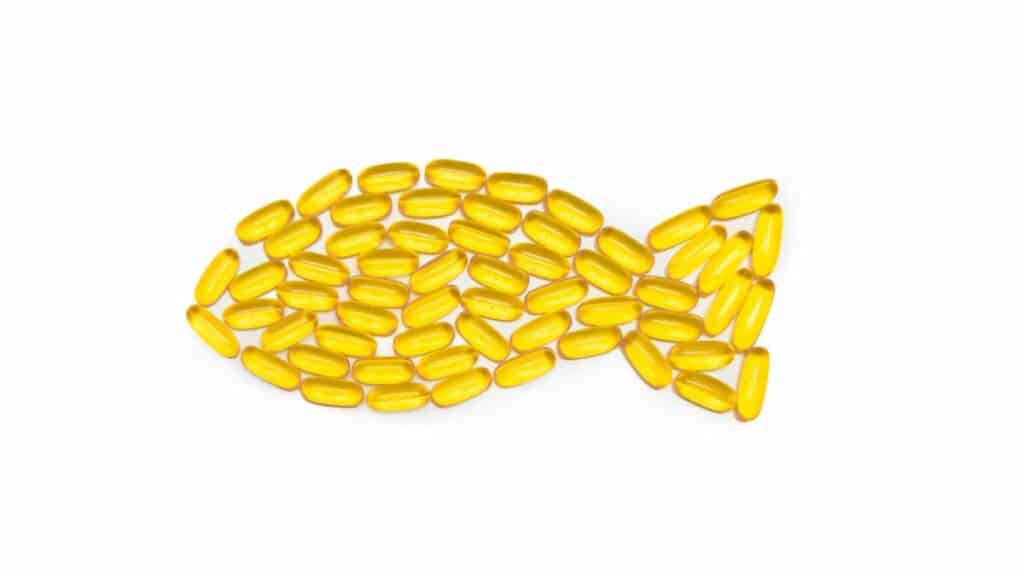
Fish oil supplements are famously known to prevent cardiovascular diseases, strengthen the immune system, and support brain function, mainly due to the omega-3 fatty acids found in fish.
These fatty acids lower harmful cholesterol levels (low-density lipoprotein) and raise good cholesterol levels (high-density lipoprotein); consequently improving cardiac health.
However, the benefits of this responsible nutrition may be tainted by a phenomenon known as rancidification.58The Guardian, Revealed: many common omega-3 fish oil supplements are ‘rancid’The Guardian. 2021
Rancidity occurs when fats or oils are oxidized due to light, air, temperature extremes, or moisture exposure.
As a result, fats or oils become inflammatory, developing a foul odor and bitter taste.
An everyday example of this phenomenon would be when milk or butter goes bad.
But surely, one would notice when fish oil supplements go bad?
Well, not necessarily.
The unpleasant odor and taste are often masked by inactive ingredients.
Rancidity may infer these supplements to be ineffective.
Regular consumption of rancid fish oil may do more harm as the free radicals formed will damage cells and tissues, leading to chronic health issues.59Vidit V Satokar, Wayne S Cutfield, David Cameron-Smith, Benjamin B Albert, Response to Bannenberg and RiceNutrition Reviews. 2022
Unfortunately, rancidity is not the only problem with fish oil as many of these supplements may contain dangerous ingredients such as heavy metals and other contaminants.
Over the decades, the sea has increasingly become contaminated with metals, considerably mercury, contaminating the fish we consume.60Ximena Raimann, Lorena Rodríguez O, Paulina Chávez, Claudia Torrejón, Mercury in fish and its importance in healthRev Med Chil. 2014
Consequently, these heavy metals have also infiltrated fish oil supplements.61Anthony J. Busti, MD, Fish Oil (Omega-3 Fatty Acid) Supplements and Mercury ContentEB Consult. 2015
Frequent consumption of these contaminated supplements may lead to heavy metal poisoning or at least inflammation.62US FDA, Mercury Levels in Commercial Fish and ShellfishUS FDA. 2022
So, what can we do about these toxins in vitamins? Are there any vitamins left that we can turn towards?
What To Look For In A Good Dietary Supplement
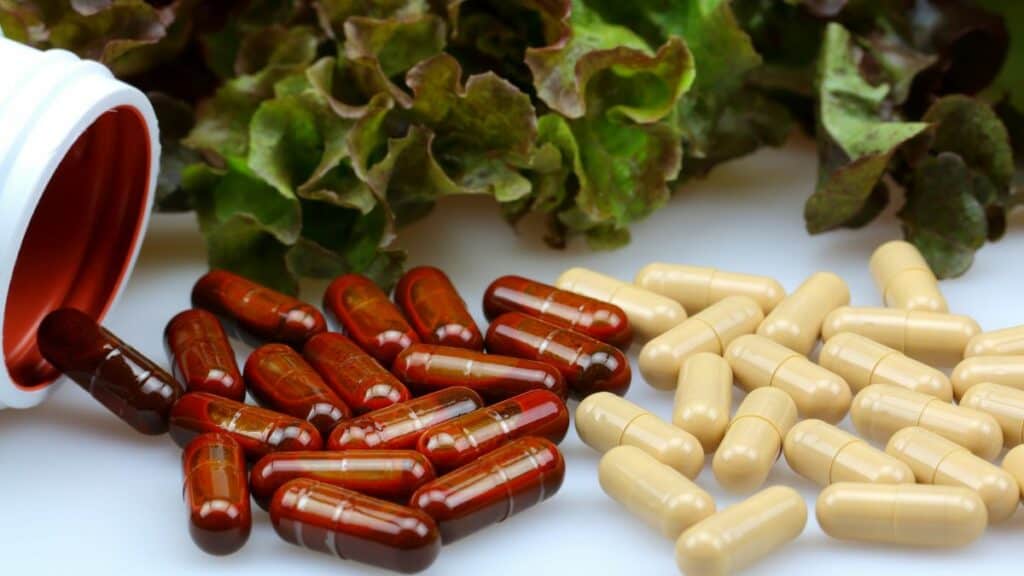
How can we ensure the safety of the dietary supplements we consume?
The key is to scrutinize the back labels of every dietary supplement where all ingredients are listed
You also want to the supplement company’s website for manufacturing practices.
The first thing to check is whether the pharmaceutical company is following current good manufacturing practices (CGMP).
CGMP regulations by the FDA assure that the drug products meet quality standards. The FDA regularly inspects manufacturing facilities for compliance.63US FDA, Facts About the Current Good Manufacturing Practices (CGMPs)US FDA. 2021
The second thing to check is the Certificate of Analysis (COA).
The COA is a document that attests that all ingredients (active and inactive) in a batch of supplements comply with the CGMP criteria.
The COA can be found on the product’s website. 64IADSA, CERTIFICATES OF ANALYSIS FOR SUPPLEMENT INGREDIENTS: GUIDELINES ON THEIR PREPARATION AND USEIADSA. 2022
Some manufacturers and companies opt for third-party testing as well.
This means that a company other than the supplement company tests the supplements and vouches for their quality.
Third-party companies include NSF International and US pharmacopeial Convention (USP).65Sharon R. Akabas, PhD et al, Quality Certification Programs for Dietary SupplementsPRACTICE APPLICATIONS TOPICS OF PROFESSIONAL INTEREST. 2016
The problem is that the supplement company does pay the third party for testing and provides them the sample of their products.
However, the third party decides what it will test the product for, whether for ingredients potency and accuracy or the presence of bacteria, mold, or metals.
Customer reviews are also helpful.
Conclusion
While this article may seem hostile toward the supplement industry, it’s only because I am so passionate about supplements.
While there are plenty of companies selling substandard products, there are those that are actually selling high-quality, reputable products.
The point of this post was not to scare you from using supplements but rather to inform you of what to look out for on labels to help you find those products that deliver actual, healthy nutrition.
- 1Daniel Reker et al, ‘Inactive’ ingredients in oral medicationsSci Transl Med. 2019
- 2Priya Sellaturay , Shuaib Nasser, Pamela Ewan , Polyethylene Glycol-Induced Systemic Allergic Reactions (Anaphylaxis)J Allergy Clin Immunol Pract. 2021
- 3E Wenande, L H Garvey ,Immediate-type hypersensitivity to polyethylene glycols: a reviewClin Exp Allergy. 2016
- 4Cosby A. Stone, Jr., MD, MPH et al, Immediate Hypersensitivity to Polyethylene Glycols and Polysorbates: More Common Than We Have RecognizedJ Allergy Clin Immunol Pract. 2019
- 5Chun Dai , Yunchao Huang , Yongchun Zhou , Research progress about the relationship between nanoparticles silicon dioxide and lung cancerZhongguo Fei Ai Za Zhi. 2014
- 6Peter HM Hoet, Irene Brüske-Hohlfeld & Oleg V Salata, Nanoparticles – known and unknown health risksJournal of Nanobiotechnology. 2004
- 7Ai Gao , Shanshan Song, Danlin Wang, Wei Peng, Lin Tian, Effect of silicon dioxide on expression of poly (ADP-ribose) polymerase mRNA and proteinCell Biol Int. 2009
- 8Jun Diao et al, Silicon dioxide nanoparticles induced neurobehavioral impairments by disrupting microbiota-gut-brain axisJ Nanobiotechnology. 2021
- 9Peter Aggett et al, Re-evaluation of silicon dioxide (E 551) as a food additiveEFSA Journal 2018
- 10Pub Chem, Sodium ascorbatePub Chem. 2008
- 11Michele Varvara et al, The Use of Ascorbic Acid as a Food Additive: Technical-Legal IssuesItal J Food Saf. 2016
- 12Che-Jui Chang et al, Occupational Exposure to Talc Increases the Risk of Lung Cancer: A Meta-Analysis of Occupational Cohort StudiesCan Respir J. 2017
- 13Jungwon Kim et al, Lung cancer probably related to talc exposure: a case reportInd Health. 2013
- 14Che-Jui Chang et al, Talc exposure and risk of stomach cancer: Systematic review and meta-analysis of occupational cohort studiesJ Formos Med Assoc. 2020
- 15Ross Penninkilampi, Guy D Eslick, Perineal Talc Use and Ovarian Cancer: A Systematic Review and Meta-AnalysisEpidemiology. 2018
- 16Nicolas Wentzensen, Katie M O’Brien, Talc, body powder, and ovarian cancer: A summary of the epidemiologic evidenceGynecol Oncol. 2021
- 17Tasha Stoiber, Sean Fitzgerald, and Nneka S Leiba, Asbestos Contamination in Talc-Based Cosmetics: An Invisible Cancer RiskEnviron Health Insights. 2020
- 18A M Fan, K W Kizer,Selenium. Nutritional, toxicologic, and clinical aspectsWest J Med. 1990
- 19NIH, SeleniumNIH. 2021
- 20Matej Skocaj et al, Titanium dioxide in our everyday life; is it safe?Radiol Oncol. 2011
- 21Threes G Smijs and Stanislav Pavel, Titanium dioxide and zinc oxide nanoparticles in sunscreens: focus on their safety and effectivenessNanotechnol Sci Appl. 2011
- 22Ewa Baranowska-Wójcik et al, Effects of Titanium Dioxide Nanoparticles Exposure on Human Health-a ReviewBiol Trace Elem Res. 2020
- 23Tao Chen 1, Jian Yan , Yan LiJ, Genotoxicity of titanium dioxide nanoparticles Food Drug Anal. 2014
- 24Yiying Bian et al, Titanium dioxide nanoparticles enhance thrombosis through triggering the phosphatidylserine exposure and procoagulant activation of red blood cellsPart Fibre Toxicol. 2021
- 25
- 26Michalina Oplatowska-Stachowiak , Christopher T Elliott , Food colors: Existing and emerging food safety concernsCrit Rev Food Sci Nutr. 2017
- 27L Eugene Arnold , Nicholas Lofthouse, Elizabeth Hurt, Artificial food colors and attention-deficit/hyperactivity symptoms: conclusions to dye forNeurotherapeutics. 2012
- 28Prabasheela Bakthavachalu, S Meenakshi Kannan, M Walid Qoronfleh, Food Color and Autism: A Meta-AnalysisAdv Neurobiol. 2020
- 29EFSA, Food coloursEFSA. 2013
- 30Carol Potera, DIET AND NUTRITION: The Artificial Food Dye BluesEnviron Health Perspect. 2010
- 31Bruno Moreira Soares. et al, Effects on DNA repair in human lymphocytes exposed to the food dye tartrazine yellowAnticancer Res. 2015
- 32Panagiotis Mpountoukas et al, Cytogenetic evaluation and DNA interaction studies of the food colorants amaranth, erythrosine and tartrazineFood Chem Toxicol. 2010
- 33Sarah Kobylewski , Michael F Jacobson, Toxicology of food dyesInt J Occup Environ Health. 2012
- 34T H Lee, Genetically modified foods and allergyHong Kong Med J. 2017
- 35Steve L Taylor , Susan L Hefle, Genetically engineered foods: implications for food allergyCurr Opin Allergy Clin Immunol. 2002
- 36Caroline J Tuck et al, Food IntolerancesNutrients. 2019
- 37Richard F Edlich et al, Dangers of cornstarch powder on medical gloves: seeking a solutionAnn Plast Surg. 2009
- 38Denise L Hofman , Vincent J van Buul , Fred J P H Brouns, Nutrition, Health, and Regulatory Aspects of Digestible MaltodextrinsCrit Rev Food Sci Nutr. 2016
- 39Lars K Poulsen, Allergy assessment of foods or ingredients derived from biotechnology, gene-modified organisms, or novel foodsMol Nutr Food Res. 2004
- 40Barbara de Santis et al, Case studies on genetically modified organisms (GMOs): Potential risk scenarios and associated health indicatorsFood Chem Toxicol. 2018
- 41Harumi Okuyama et al, Medicines and Vegetable Oils as Hidden Causes of Cardiovascular Disease and DiabetesPharmacology. 2016
- 42Swati Bhardwaj 1, Santosh Jain Passi, Anoop Misra Overview of trans fatty acids: biochemistry and health effectsDiabetes Metab Syndr. 2011
- 43E Ginter, V Simko, New data on harmful effects of trans-fatty acidsBratisl Lek Listy. 2016
- 44Michelle Pearlman , Jon Obert , Lisa Casey, The Association Between Artificial Sweeteners and ObesityCurr Gastroenterol Rep. 2017
- 45Rebecca J Brown , Mary Ann de Banate, Kristina I Rother, Artificial sweeteners: a systematic review of metabolic effects in youthInt J Pediatr Obes. 2010
- 46Jotham Suez , Tal Korem, Gili Zilberman-Schapira, Eran Segal, Eran Elinav Non-caloric artificial sweeteners and the microbiome: findings and challengesGut Microbes. 2015
- 47Arbind Kumar Choudhary , Etheresia Pretorius, Revisiting the safety of aspartameNutr Rev. 2017
- 48Mohammad Reza Ardalan, Hadi Tabibi, Vahideh Ebrahimzadeh Attari , Aida Malek Mahdavi, Nephrotoxic Effect of Aspartame as an Artificial Sweetener: a Brief ReviewIran J Kidney Dis. 2017
- 49Arbind Kumar Choudhary, Yeong Yeh Lee, Neurophysiological symptoms and aspartame: What is the connection?Nutr Neurosci. 2018
- 50Susan S Schiffman, Kristina I Rother, Sucralose, a synthetic organochlorine sweetener: overview of biological issuesJ Toxicol Environ Health B Crit Rev. 2013
- 51Samar Y Ahmad , James K Friel, Dylan S Mackay, Effect of sucralose and aspartame on glucose metabolism and gut hormonesNutr Rev. 2020
- 52Agnieszka Piekara et al, Sweetening Agents and Sweeteners in Dietary Supplements for Children-Analysis of the Polish MarketNutrients. 2020
- 53Gregory Thoorens et al, Microcrystalline cellulose, a direct compression binder in a quality by design environment–a reviewInt J Pharm. 2014
- 54Lonnie Marcum, LYME SCI: Are hidden ingredients in pills making you sicker?LymeSci. 2019
- 55Gerhard J. Molderings et al, Pharmacological treatment options for mast cell activation diseaseNaunyn Schmiedebergs Arch Pharmacol. 2016
- 56Gerhard J Molderings et al, Mast cell activation disease: a concise practical guide for diagnostic workup and therapeutic optionsJ Hematol Oncol. 2011
- 57Gerhard J. Molderings et al, Pharmacological treatment options for mast cell activation diseaseNaunyn Schmiedebergs Arch Pharmacol. 2016
- 58The Guardian, Revealed: many common omega-3 fish oil supplements are ‘rancid’The Guardian. 2021
- 59Vidit V Satokar, Wayne S Cutfield, David Cameron-Smith, Benjamin B Albert, Response to Bannenberg and RiceNutrition Reviews. 2022
- 60Ximena Raimann, Lorena Rodríguez O, Paulina Chávez, Claudia Torrejón, Mercury in fish and its importance in healthRev Med Chil. 2014
- 61Anthony J. Busti, MD, Fish Oil (Omega-3 Fatty Acid) Supplements and Mercury ContentEB Consult. 2015
- 62US FDA, Mercury Levels in Commercial Fish and ShellfishUS FDA. 2022
- 63US FDA, Facts About the Current Good Manufacturing Practices (CGMPs)US FDA. 2021
- 64
- 65Sharon R. Akabas, PhD et al, Quality Certification Programs for Dietary SupplementsPRACTICE APPLICATIONS TOPICS OF PROFESSIONAL INTEREST. 2016














